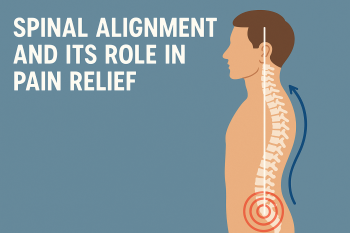
What is a disk bulge?
A bulging disc is a common spinal injury that affects your spine’s intervertebral discs, which act as shock absorbers between your vertebra. Also commonly called a slipped disc, a disc bulge can be sustained in your lower back (lumbar spine), upper and middle-back (thoracic spine), or your neck (cervical spine). When a disk bulge occurs, it may irritate the nerve where it exits the spine, causing discomfort, pain, and other symptoms.
While a bulging disc is often associated with the normal aging process due to the gradual loss of fluid, athletes and people who perform heavy physical tasks, such as for their work, are often prone to bulge discs.
What is disk herniation?
The disk bulge may become so significant that it cracks the disc’s outer layer, or annulus, which is known as disk herniation. Usually, a small area of the disc is compromised, allowing the soft material within that makes up the nucleus pulposus to protrude – something that doesn’t happen with a bulging disc, where there is no crack and no material protrusion.
Disk herniation can be caused by wear and tear as discs gradually lose fluid and become less flexible, stressful repetitive movements such as with athletics, physical jobs, or lifting things the wrong way, or injuries. Obesity and genetic factors also contribute to the susceptibility of disk herniation.
Disk bulge symptoms
Symptoms of bulging discs may include:
• Significant pain in the shoulder region or over the shoulder blade.
• Pain when you move your neck or low back
• Radiating pain in your fingers, forearms, or upper arms
• Numbness, tingling, or weakness in one or both legs
• Hyper reflexivity in your leg(s)
• Changes in bladder or bowel function
If you experience aggravating pain as you sit, bend forward, lift something, or even just cough or sneeze, you may have a bulging disc injury.
Disk herniation symptoms
Aside from experiencing some of the symptoms associated with a bulging disc, herniated disc symptoms may also include:
• Shooting pain in your low back, buttocks, thighs, or calves.
• If the herniated disc is in your neck, you may experience intense pain in your shoulders or arms.
• Numbness, burning, or tingling in the region where the herniated disc occurred.
• Weakened muscles
• Symptoms worsening at night
Multilevel disk bulge and multilevel disk herniation
Multilevel disk bulge and multilevel disk herniation are characterized by something far more serious, degenerative lumbar spinal stenosis (DLSS) which can prove difficult to treat. Unfortunately, DLSS has become more commonplace due to our aging population, the prevalence of obesity and inactivity, and other lifestyle factors.
Chiropractic treatment for bulging and herniated discs
Chiropractic is a great first option for the treatment of bulging or herniated discs since it is non-invasive and doesn’t include injections, addictive painkillers, or risky surgeries. In their initial diagnosis, a chiropractor will go over your medical history as well a thorough physical examination where they test for nerve function, reflexes, muscle tone, and more. They may even order an MRI or x-ray when needed and review the results with you.
Most patients will benefit from focused chiropractic adjustments, where your Doctor of Chiropractic will use low force techniques to manipulate and adjust your spine at and around the area of the bulging or herniated disc.
Your chiropractor may elect to use a cervical or lumbar traction machine, which can help alleviate the problem and aid your treatment by gently opening the joints of the spine, taking pressure off of the damaged disc, and allowing the bulge or herniation to reintegrate correctly in place.
Additionally, a chiropractor will usually offer an all-body approach to wellness, offering guidance with diet and nutrition, exercise, sleep, stress relief, and other health initiatives.
Numerous credible studies and decades of empirical research have shown that chiropractic treatment is a safe, efficient, and effective way to treat bulging or herniated discs, treating the root cause, so you experience relief from pain, discomfort, and other aggravating symptoms.
Chiropractic care can help treat disk bulge or a disk herniation, resulting in a better quality of life!
Upper Cervical chiropractic is concerned with correcting the underlying reason spinal and postural imbalance occurs in the first place. Correcting interferences to the spinal cord in the neck through precise, gentle correction, the spinal muscle tone can become more balanced. Muscle s that are tight can relax and not only can disc problems improve but also the overall body will function better.
This process generally takes several months for stabilization and is not an overnight miracle. We have found in our offices that many patients come in for a particular condition and are happy to report that things that they did not know were related to their neck improvement.
The most common health problems we see improve by correcting the upper cervical spine are vertigo, neck and back pain, insomnia, migraine headaches, fatigue, fibromyalgia, and more.




Leave a comment